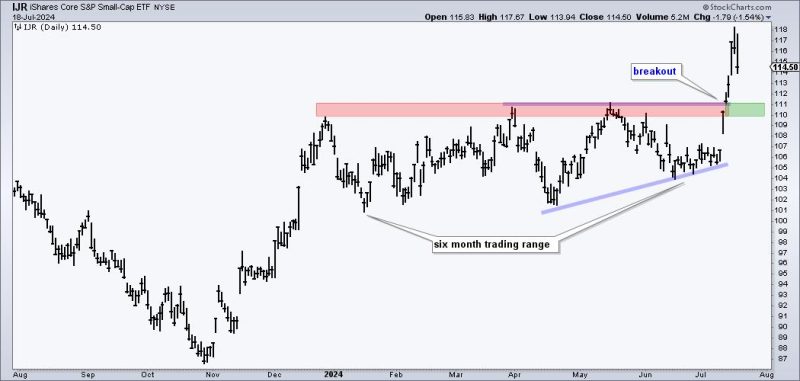Small Caps Break Out and Lead – Now What?
Small-cap stocks have been on a tear recently, outperforming their larger counterparts and leading the market rally. This breakout in small caps has caught the attention of both investors and analysts alike as they continue to surge ahead. But what does this mean for the broader market and how should investors navigate this shifting landscape?
The recent strength in small-cap stocks can be attributed to several factors. One key driver is the improving economic environment, with strong consumer spending, robust job growth, and a rebound in corporate earnings all helping to boost small-cap companies. In addition, the low-interest-rate environment has made borrowing cheaper, providing small caps with easier access to capital to fuel growth and innovation.
Another factor fueling the small-cap breakout is the rotation out of mega-cap tech stocks that have been driving the market higher for much of the past year. As investors look for opportunities beyond the tech giants, small-cap stocks have emerged as an attractive option due to their lower valuations and potential for outsized returns.
So, what should investors do now that small caps are leading the way? One approach is to consider adding exposure to small-cap stocks to your portfolio to take advantage of their strong performance. Diversifying across different market segments, including small caps, can help mitigate risk and potentially enhance returns over the long term.
However, it’s important to approach small-cap investing with caution. These stocks tend to be more volatile and less liquid than their larger counterparts, which can lead to sharp price swings and increased risk. Due diligence is crucial when selecting individual small-cap stocks, as thorough research and analysis are necessary to identify companies with solid fundamentals and growth potential.
Another option for investors looking to capitalize on the small-cap breakout is to consider investing in small-cap focused mutual funds or exchange-traded funds (ETFs). These funds offer diversification across a range of small-cap stocks and are managed by professional portfolio managers who specialize in this market segment.
In conclusion, the breakout in small-cap stocks presents investors with a compelling opportunity to potentially capitalize on the strength of these companies. By understanding the drivers behind the small-cap rally and employing a thoughtful investment strategy, investors can position themselves to benefit from the potential upside while managing the inherent risks associated with small-cap investing.

